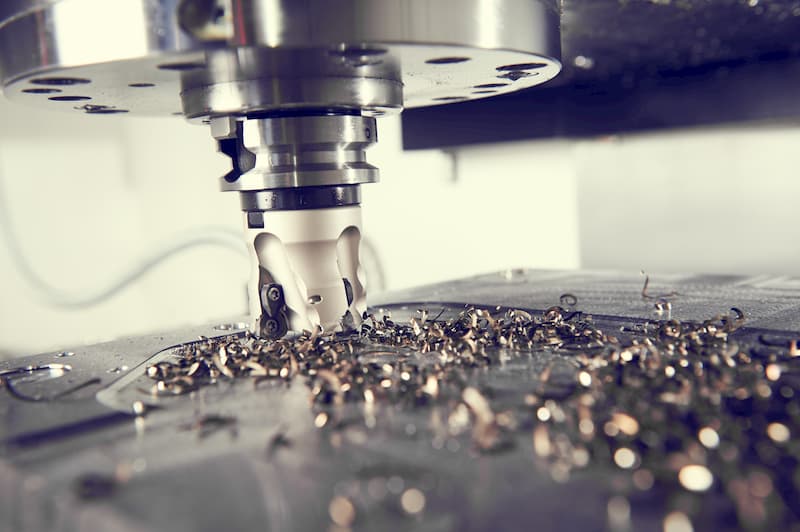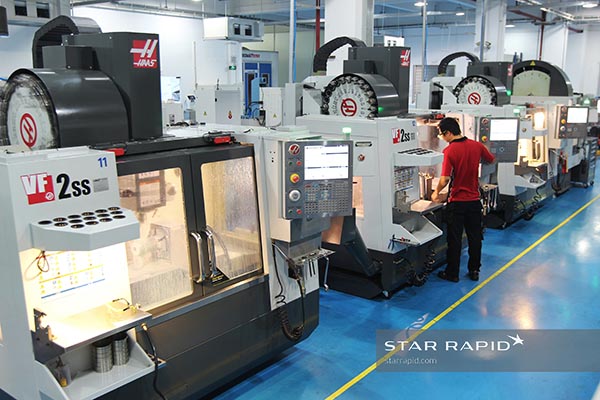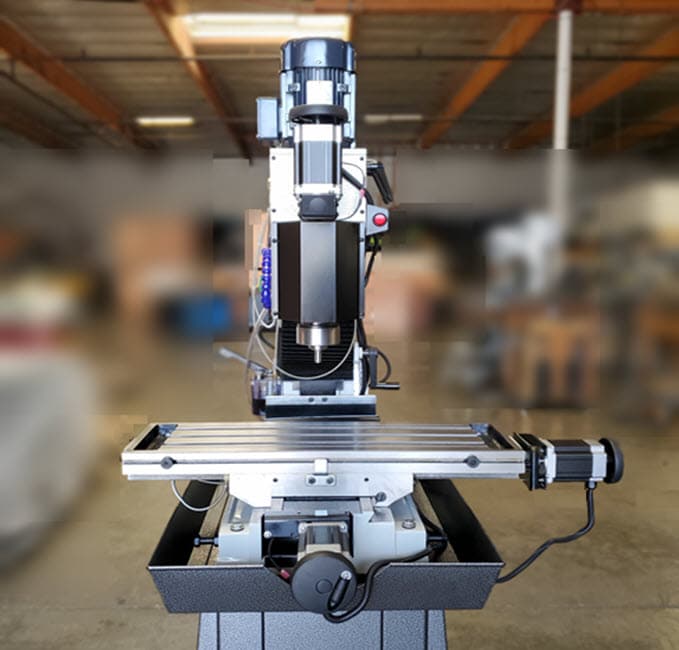Table of Contents
CNC milling is a process that many industries rely on for precision manufacturing. However, one of the most common questions asked is: “How long does CNC milling take?” The answer is not as straightforward as you may think, as there are several factors that can affect the time it takes to complete a job.
In this article, we will explore the different variables that can impact the duration of a CNC milling project. From the complexity of the design to the type of material used, we will break down each aspect and provide insights into how it affects the overall timeline. So, whether you’re a manufacturer looking to optimize production or simply curious about the milling process, read on to discover the answer to this common question.
The time it takes to complete a CNC milling project depends on various factors such as the complexity of design, material type, and size of the project. Generally, a small to medium-sized project can take anywhere from a few hours to a day, while larger and more complex projects may take several days or even weeks. The CNC milling process involves several steps, including design, programming, setup, machining, and finishing, all of which contribute to the overall processing time.
How Long Does CNC Milling Take?
When it comes to manufacturing parts and components, CNC milling is one of the most popular techniques used today. It involves using computer numerical control (CNC) machines to cut and shape materials into specific shapes and sizes. But how long does CNC milling take? Let’s take a closer look.
Factors Affecting CNC Milling Time
The time it takes to complete a CNC milling project can vary widely depending on several factors. Some of the most significant factors include:
1. Complexity of the Part
The complexity of the part being milled is a significant factor in determining how long the project will take. Parts with intricate designs and multiple features will take longer to mill than simple, straightforward parts.
2. Material Type and Hardness
The type of material being milled and its hardness can also impact the time it takes to complete a project. Harder materials, such as metals, will take longer to mill than softer materials like plastics.
3. Machine Capabilities
The capabilities of the CNC milling machine being used can also impact the time it takes to complete a project. Machines with higher spindle speeds and more advanced cutting tools will typically be able to complete projects faster than machines with lower capabilities.
4. Tool Life and Wear
The life of the cutting tools being used and their wear can also impact project time. Dull or worn tools will take longer to complete a project than sharp, new tools.
Typical CNC Milling Times
Despite the many factors that can impact milling time, there are some general guidelines for how long a project may take. Here are some typical ranges for different types of projects:
1. Simple Parts
For simple parts with basic designs and features, milling can take anywhere from a few minutes to an hour or two.
2. Complex Parts
For more complex parts with intricate designs and multiple features, milling can take several hours or even days.
3. Large Parts
For large parts like molds, milling can take several days or even weeks to complete.
Benefits of CNC Milling
While CNC milling may take some time to complete, it offers many benefits over traditional manufacturing techniques. Some of the most significant benefits include:
1. Precision
CNC milling machines can create parts with incredible accuracy and precision, ensuring that even the most complex designs are manufactured to exact specifications.
2. Efficiency
Because CNC milling is automated and computer-controlled, it can be completed much more efficiently than traditional manufacturing techniques.
3. Versatility
CNC milling machines can work with a wide range of materials, including metals, plastics, and composites, making them incredibly versatile.
4. Cost-Effective
Despite the initial investment required to purchase a CNC milling machine, the technology can be incredibly cost-effective over the long run, especially for high-volume production runs.
CNC Milling vs. Traditional Manufacturing Techniques
Compared to traditional manufacturing techniques like manual milling and lathe work, CNC milling offers several significant advantages. Here are a few ways CNC milling outperforms traditional methods:
1. Accuracy and Precision
CNC milling machines can create parts with much greater accuracy and precision than manual techniques, ensuring that parts are manufactured to exact specifications.
2. Efficiency and Speed
Because CNC milling is automated and computer-controlled, it can be completed much more efficiently and quickly than manual techniques.
3. Consistency and Reproducibility
CNC milling ensures that every part is identical and consistent, making it ideal for high-volume production runs.
4. Flexibility and Versatility
CNC milling machines can work with a wide range of materials and part designs, making them incredibly versatile and flexible.
Conclusion
While CNC milling may take some time to complete, it offers many benefits over traditional manufacturing techniques. By understanding the factors that impact milling time and the benefits of CNC milling, manufacturers can make informed decisions about which techniques to use for their projects.
Frequently Asked Questions
Here are some frequently asked questions about CNC milling and how long it takes:
How long does CNC milling take?
The time it takes for CNC milling depends on several factors, including the complexity of the design, the material being used, and the size of the part. Generally, simple designs and smaller parts can be milled faster than complex designs and larger parts. Additionally, the material being used can affect the milling time. Softer materials, such as aluminum, can be milled faster than harder materials, like steel.
In general, CNC milling can take anywhere from a few minutes to several hours. It is important to note that the milling process can be automated, so multiple parts can be milled at once, which can help reduce overall milling time.
What factors affect the milling time?
As mentioned, several factors can affect the milling time. One of the most significant factors is the complexity of the design. More complex designs require more time to mill. Additionally, the material being used can affect the milling time. Harder materials, like steel, require more time to mill than softer materials, like aluminum.
The size of the part being milled can also affect the milling time. Larger parts require more time to mill than smaller parts. Finally, the milling machine being used can affect the milling time. More advanced machines can mill parts faster than less advanced machines.
How can milling time be reduced?
There are several ways to reduce milling time. One of the most effective ways is to simplify the design. More complex designs require more time to mill, so simplifying the design can significantly reduce milling time. Additionally, using softer materials, like aluminum, can reduce milling time, as these materials can be milled faster than harder materials, like steel.
Another way to reduce milling time is to use a more advanced milling machine. More advanced machines can mill parts faster than less advanced machines. Finally, automating the milling process can help reduce milling time, as multiple parts can be milled at once.
What are the advantages of CNC milling?
CNC milling offers several advantages over traditional milling methods. One of the most significant advantages is precision. CNC milling machines can mill parts to incredibly precise specifications, which can be difficult or impossible to achieve with traditional milling methods.
Additionally, CNC milling machines can be programmed to mill parts automatically, which can save time and reduce the likelihood of errors. Finally, CNC milling machines can be used to mill a wide range of materials, including metals, plastics, and wood, making them incredibly versatile.
What are the disadvantages of CNC milling?
While CNC milling offers several advantages, there are also some disadvantages to consider. One of the most significant disadvantages is cost. CNC milling machines can be expensive to purchase and maintain, which can be a barrier to entry for some businesses.
Additionally, CNC milling machines require skilled operators to program and operate them effectively. This means that some businesses may need to invest in training to ensure that their operators are properly trained. Finally, CNC milling machines can be slower than other manufacturing methods, which can be a disadvantage if speed is a critical factor.
In conclusion, the time it takes for CNC milling depends on various factors. The complexity of the design, the type of material, the size of the project, and the number of machines used can all impact the duration of the milling process.
Despite these variables, however, modern CNC machines have significantly reduced the time needed to complete projects compared to traditional manual milling methods. With the help of computer software, CNC machines can perform intricate and precise cuts in a fraction of the time.
Furthermore, advancements in technology continue to improve the speed and efficiency of CNC milling. As new materials and techniques emerge, it is likely that the duration of CNC milling will continue to decrease. Overall, CNC milling is a highly efficient and effective method of manufacturing that continues to evolve with the latest technological advancements.
Request a quote today!
[contact-form-7 id="1578" title="Contact form"]
Please compress the file into a ZIP or RAR file before uploading. Alternatively, send through your RFQ by email.
enquires@unitymanufacture.com





